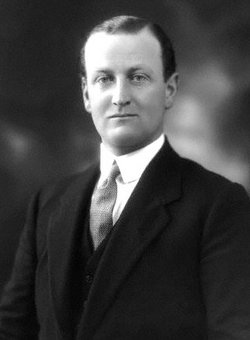George Boyd-Rochfort facts for kids
Quick facts for kids
George Arthur Boyd-Rochfort
|
|
|---|---|
 |
|
| Born | 1 January 1880 Middleton Park House, County Westmeath, Ireland, United Kingdom of Great Britain and Ireland |
| Died | 7 August 1940 (aged 60) Dublin, Ireland |
| Buried |
Castletown Old Churchyard, County Westmeath, Ireland
|
| Allegiance | |
| Service/ |
|
| Rank | Captain |
| Unit | Scots Guards |
| Battles/wars | World War I |
| Awards | |
| Relations | Cecil Boyd-Rochfort (brother) |
George Arthur Boyd-Rochfort (born January 1, 1880 – died August 7, 1940) was an Irish soldier. He is famous for receiving the Victoria Cross. This is the highest award for bravery given to British and Commonwealth forces. It is given for incredible courage when facing the enemy.
Contents
Growing Up
George Arthur Boyd-Rochfort was born in County Westmeath, Ireland, on January 1, 1880. He was the oldest son of Major Rochfort Hamilton Boyd-Rochfort. His family lived at Middleton Park House.
He went to school at Eton College, a famous school. Later, he studied at Trinity College, Cambridge. In 1904, he held an important local role as the High Sheriff of Westmeath.
Military Service
Joining the Army
Boyd-Rochfort joined the Scots Guards as a second lieutenant in April 1915. He was 35 years old when World War I was happening. He was part of the 1st Battalion, Scots Guards.
A Brave Act
On August 3, 1915, a very brave event happened. It was 2 a.m. in the trenches between Cambrin and La Bassée, France. A German mortar bomb landed near Second Lieutenant Boyd-Rochfort. He was standing close to a small group of his soldiers.
Instead of moving to safety, he yelled for his men to watch out. He then rushed towards the bomb. He quickly grabbed it and threw it over the trench wall. The bomb exploded right after it left his hand. This quick thinking and courage saved the lives of many soldiers in his group.
George Boyd-Rochfort's Own Words
Boyd-Rochfort later described what happened:
"It was at break of day, just before we were ordered to 'stand to,' we were working in the first line of trenches, and a trench that was nothing more than a graveyard. The first German trench was no more than fifty yards away, and their mortars and rifle grenades were simply spilling into us. Our trench was getting badly knocked about by the flying missiles. You must distinguish between these mortars and shells, because the mortars have a time fuse which explodes them without striking. I was just raising my head over the front of the trench, and, hearing the whiz, I said to my men, 'Look out.' Down they went. The bomb landed, and started to roll down from the top of the trench. I dashed forward and seized it, and threw it over the top of trench. Scarcely had it left my hand and reached the outside of the trench than it exploded with a terrific report. We were all buried under falling earth, but fortunately no one was hurt, although my cap was blown to pieces. My men were very appreciative of my action, and cheered and thanked me. Afterwards they wrote and signed a statement of what I had done, which they handed to the Colonel."
He left the army in 1920 with the rank of Captain.
After the War
After the war, George Boyd-Rochfort became well-known in Irish horse racing. He was a skilled jockey and polo player. He owned and bred racehorses. He also served as a senior leader for the Irish National Hunt Steeplechase Committee. His brother, Cecil Boyd-Rochfort, was also a famous racehorse trainer.
George Arthur Boyd-Rochfort passed away in Dublin on August 7, 1940.
His Grave
He was buried in the Church of Ireland graveyard in Castletown Geoghegan, County Westmeath. His memorial was updated and rededicated on August 3, 2015.
The Victoria Cross Medal
His Victoria Cross and other medals are on display. You can see them at The Guards Regimental Headquarters (Scots Guards RHQ) in Wellington Barracks, London.

